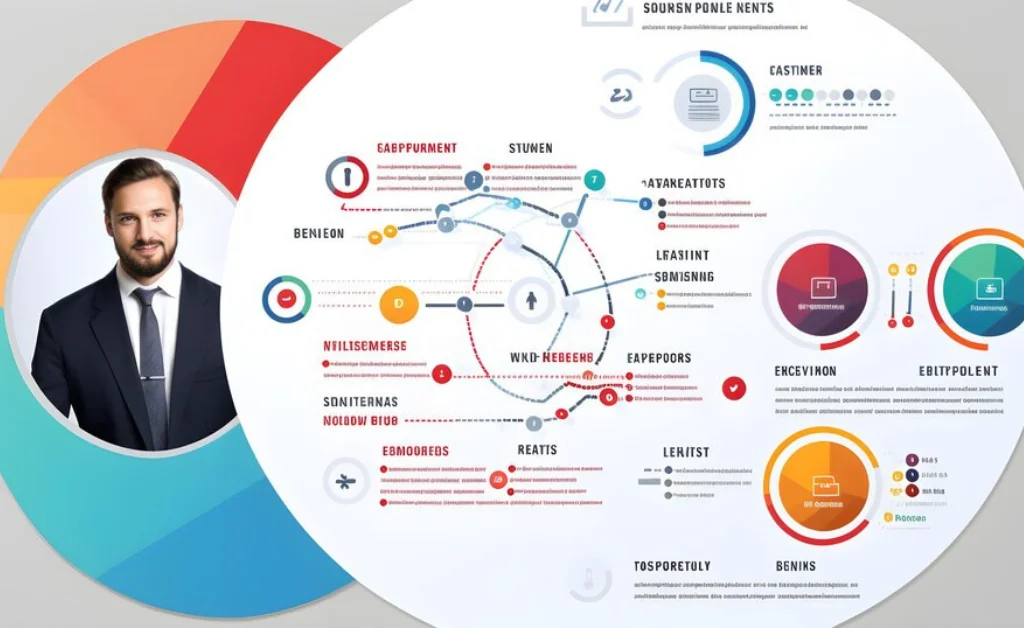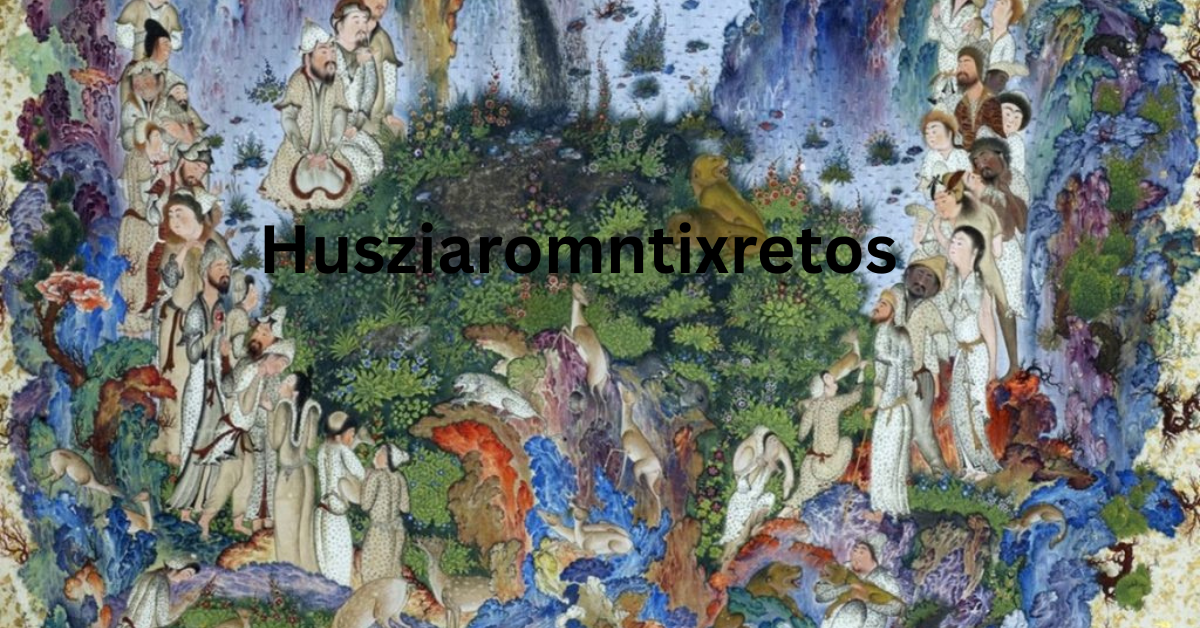Biography Graphic Organizer: Simplify and Celebrate Life Stories
A Biography Graphic Organizer is a wonderful tool that can be used in teaching and learning to logically arrange and present planned and unplanned, main and subordinate information about a person’s life. It sets a clear pattern through which it becomes easy to capture holistic chronological timelines, achievements among other personal milestones. These organizers are valuable for use in academic, biographical research, and applied or personal endeavors of every description, offering insight into and ways to embrace life narrative. See how to construct comprehensive biographies with these tools.
Definition of a Biography Graphic Organizer
A biography graphic organizer is, therefore, a graphic tool developed to capture vital aspects of a person’s life. They include life history, which encompasses features such as; birth, childhood, education, employment, marital, and other significant accomplishments. Thus, information about biographical subjects is organized in charts, diagrams, or templates, so that the organizer kept interest in biographical researches and focused to the main points.
These tools are freely available online and can be adapted for various different types of biographic needs, including actual family trees, career progression planning and achievement boards. They help the researchers, students and the writers to develop a logical materic and convincing life history.
Use of Biography Organizers in the Past and Present
The organization of biographical details was the practice of start historians who put pen to manuscript to writing down important lives. In modern times this practice has been transformed into the charts and the infopointers that are structured by the timelines, the significant events in life and achievements. With developments in technologies, these tools have been made more specific and complicated in that it can provide templates based on certain types of researches or educational requirements.
In the current generation there are many biography graphic organizers that have been adopted by schools, educational researches, and people with personal stories to tell. They stand between historical facts and narrative forms, so every life would be told actually and powerfully.
Also Read: https://creatify.click/anon-image-board
Information Distilled From A Biography For Use In Making A Biography Graphic Organizer
Such an organizer must possess the following aspects of a good graphic organizer as it relates to biography. First, there is the biographical section, which covers such aspects as birth as well as the family. Subsequently, it presents an organized timeline of significant life events and Social Presence Exchange Turning Points and Accomplishments.
Personality characteristics and other factors, as well as personal attributes, emerge as critical factors providing perception into the consumer’s nature and drive. Even otherwise, more emphasis is given to the educational qualification achieved, career achievements, and accomplishments along with contribution mapped to signify growth and relevance. Last yet not the least; the impact area illustrates the type of impact left behind by the particular individual for time Courses and Personal Growth.
The Use of a Time Line
Any biography graphic organizer cannot do without chronological timelines. They portray the life events in chronological way, giving the clear understanding how a certain individual’s life was. Such timelines can be exact, based on the days, months and years, as in the case of individual’s birth and death, graduation, promotion etc.
Making readers identify the same breaks and critical choices, chronological timelines make connections between life circumstances plainly. They also give us an idea of background information which help a researcher to put the life of the individual under study into perspective.
Morals and Personality Factors
In most cases, the autobiography fails to address the personality development of the subject or the transition that molded the figure. Biography graphic organizers include areas on personality profile, virtues, and behavior which enhance the reader’s insight on his or her actions.
People’s sources of inspiration also matter here; friends, family, or historical events also might be inspiring. Such connections are depicted by two instruments, namely relationship maps and influence webs, which provide an overall outlook on the factors that shaped the person’s life course.
Schooling Attainment and Career Advancement
This means that in most biographical study, education is always considered an initial step. Biography graphic organizers have segments that focus on an element and shows the academic accomplishments, institutions and learning achievements. These and other details do not only underscore the processes of intellectual development but also give the later achievements a background.
Another important issue discussed extensively in the literature is career advancement. With the use of tools such as career maps and achievement maps, these organizers illustrate how the person’s career developed. It also assist in capturing great contributions, leadership, and achievement milestones as part of defining the person’s story.
The Role of Familiy and Relations
A person’s background gives much insight on the individual’s entire lifetime experiences. Typically, when using biography graphic organizers one is likely to use family tree to show relationships probably informing about the background of the person. These tools also document how family relations affected the life decisions and personality transformation.
There are business and friendly connections that exist rather than family, tutors, and other stakeholders. Making such links useful to understand the interaction that existed between the person and the organisations/human being(s) that supported them in accomplishing meaningful milestones.
The Major Contributions and the Legacy
Biography graphic organizers are created to emphasize the subject’s key accomplishments and his/her impact to the society. Telling the story is this elements which shows how the person benefited the society or his/her field through achievement and service.
Traditional elements of the legacy can be the tools for the visual representation of the legacy contributive such as legacy impact charts that explain the contribution of the individual. These tools are especially helpful when document how this person’s work is still relevant in future generations.
Pictorial and Scripted Semiotics
A big advantage of biography graphic organizers is that they can be used to describe peoples’ lives in detail. Objects such as uses for allowing students to identify the milestones, timeline organizers, and the contribution of flow charts ensure that biographical details of the subject are made clear. This not only helps to get a better understanding of the issue, but also pleases readers who prefer to perceive information through usable and beautiful visuals.
The number of groups of frames in a biography graphic organizer is rather limited; at the same time, they united in chronologically logical sections. These tools use chronological order hand in hand with thematic arrangement and, therefore, provide a coherent and engaging life narrative.
Use of Biography Graphic Organizers-animation
Biography graphic organizers are well-known throughout education and in society as well as in individual narratives. In classrooms, they allow student projects, and learners can develop an understanding of the character or develop an autobiography, respectively. Using these organizers in research, one is able to eliminate a lot of work needed when organizing data that is biographical in nature.
They are also used in family projects, where people can record a family tree or congratulate the hero of the occasion. That way, biography graphic organizers are useful for many students and functions for many reasons since they are templates.
Also Read: https://lyrifii.com/arpineh-cholakian-biography/
Biography Graphic Organizers: How To
The necessary steps towards making a biography graphic organizer include several of the following steps. First, choose a template which can best be used such as a timeline chart or a family tree diagram. This so refer from searching primary sources, document and interviewing to scrupulosity collect information.
Group the information chronologically and by topic, early years, education, career and posterior years. Express it in a form of charts and / or maps to enhance its efficiency when delivering its information. Last, look over the organizer to find out whether it includes all important aspects about the life of the individual.
FAQs
A biography graphic organizer is a teaching tool that the teacher uses in the classroom to help students organize relevant information about a particular person.
A biography graphic organizer can be defined as a framework that helps one arrange a subject’s information in terms of timelines, accomplishments, character, and history of relatives.
In what ways does biography graphic organizers useful in teaching and learning?
They help to clarify the identification of biographical facts and, therefore, are useful in student’s assignments, research, and narratives.
What components are there within a biography graphic organizer?
Some of the elements are the time lines, family trees, education, career and leaders ships or legacy trees.
Is it possible to use a biography graphic organizer for personal work?
Indeed, these organizers are perfect when one wants to keep track of his or her genealogy, record a special accomplishment, or make a legacy map for a family member.
I am in need of biography graphic organizers, where can I get the templates?
There are many sources on the Internet to locate this type of template including timeline organisers, family tree forms, and achievement charts.



